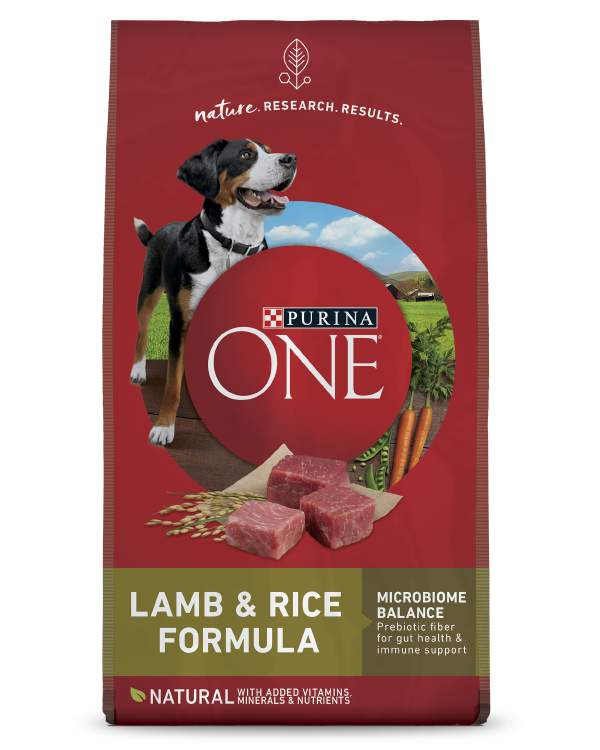Did you know that lilies, although pretty, delicate-looking spring flowers, can be toxic for dogs? Lily pollen and dogs don’t mix, not because it causes allergies, as it might for people, but if your dog ate lily pollen, it could be very toxic.
As you may know, dogs sometimes like to eat things they’re not supposed to, including plants. If you have lilies, keep them away from your dog, just in case.
If you’re a dog parent, learning about the potential dangers of lilies to dogs is imperative. If you’re wondering, Are lilies dangerous for dogs? or Are lilies safe for dogs?, you’ve come to the right place to tackle dog lily toxicity concerns.
Our experts explain the potential risks associated with dogs eating lilies, including information on different types of lilies toxic to dogs and how ingesting different plant parts can cause serious health problems.
We point out ways to keep dogs away from lilies, specifically helping identify these plants and taking necessary precautions to keep pets safe and healthy. We also offer tips on what to do if a dog has ingested a lily, starting with the importance of seeking veterinary care immediately.
Which Lilies Are Toxic to Dogs?
To support your dog’s health the best you can, it’s essential that you know the lilies dangerous to dogs and lilies unsafe for holiday celebrations or springtime decorations. Here are some of the lilies bad for dogs to eat.
Prairie Lily (Rain Lily)
Severely poisonous; even if your dog ate lily bulb morsels, they would suffer the most severe symptoms compared to consuming other parts of that lily, including a severe stomachache. These flowers are typically white with three sepals and three petals, spread to two inches across. In the wild, they’re usually found in Louisiana and Texas.
Lily of the Valley
This plant is severely poisonous. Eating its roots, leaves, or flowers can cause diarrhea, vomiting, seizures, slowed heart rate, and arrhythmias. The flowers are smaller and bell-shaped and aren’t actually classified as lilies, though they share a name. In the wild, they’re usually found in Georgia, Kentucky, North Carolina, Pennsylvania, South Carolina, Tennessee, Virginia, and West Virginia.
Peace Lily
Highly poisonous and commonly houseplants, these lilies contain toxins released upon chewing any part of this plant. The toxins released can cause stomachache, painful mouth irritation, drooling, and difficulty swallowing. Peace lily flowers are made in a spadix surrounded by a greenish, yellowish, or white spathe, and they have large green leaves. They’re usually grown as indoor houseplants, but if found outdoors, they can be found in humid areas of the United States.
Calla Lily
Also highly poisonous, these lilies can cause the same symptoms due to the same toxins. All parts of this lily plant are toxic. Calla lilies are visually similar lilies to peace lilies, but their flowers are showier, larger and come in more colors. Their leaves are a lighter green color compared to peace lilies, often with maculation. They can be found, in some form, anywhere.
Gloriosa Lily
This lily, toxic to dogs, is also known as a fire lily due to its petals’ flame-like shape. It can cause bone marrow suppression, salivation, vomiting, diarrhea, liver damage, and kidney failure if eaten. They are not native to the United States.
Avoid Lilies Anywhere
Are all lilies poisonous to dogs? No, but here’s a disclaimer regarding lilies considered nontoxic for dogs: they should still be avoided because their consumption can cause stomachaches for your pup. Dogs and lilies just don’t really mix. Some of these lilies include:
- Easter lilies
- Daylilies
- Tiger lilies
- Peruvian lilies
- Stargazer lilies
- Japanese show lilies
- Wood lilies
- Spider lilies
- Oriental lilies
- Rubrum lilies
Why Are Lilies Toxic to Dogs?
Lilies are individually toxic to dogs for varying reasons.
Several lilies, such as peace and calla lilies, have insoluble calcium oxalate crystals (cardiac glycosides), which are toxins that are released when chewed and can cause painful irritation if absorbed into a dog’s skin tissue, including in and around their mouths.
Cardiac glycosides in lily of the valley flowers can cause an irregular heartbeat and stomach upset.
Concentrated amounts of colchicine in the tubers of the Gloriosa lily can cause a range of symptoms, including liver damage, bone marrow suppression, kidney failure, salivation, diarrhea, and vomiting.
Signs of Lily Poisoning in Dogs
Some dangers of dogs consuming lilies often show within two hours of consumption. Symptoms of lily poisoning in dogs may include the following:
- Vomiting
- Diarrhea
- Seizures
- Decreased appetite
- Pawing at the face due to oral irritation, specifically due to ingesting peace lilies or calla lilies, as well as:
- Lip swelling
- Changes in vocalization
- Breathing difficulties (though rare)
- Excessive drooling
- Heart problems (specifically due to ingesting lily of the valley)
- Mouth irritation
- Difficulty swallowing
- Gastrointestinal upset
- Hiding
- In some of the most extreme cases, death can occur
Treatment for Lily Poisoning in Dogs
If you feel stuck wondering, My dog ate a lily petal! What do I do? Suppose you suspect your dog ate any lilies. In that case, you must call your veterinarian as soon as possible to determine the best next steps.
If you can’t get ahold of a vet, you should contact the Animal Poison Control Center (APCC) at (888) 426-4435.
After realizing to yourself that “my dog ate a lily,” the longer you delay proper treatment, the higher the risk of severe injury or death. Your veterinarian will know the best treatment your dog needs depending on the type of lily your dog ingested, age, and overall health, among other factors. Make sure to take a picture of the plant they ingested prior to taking them in.
After you’ve consulted with your veterinarian, treatment for dog lily poisoning may include:
- Induced vomiting to remove irritants if it’s within an hour of eating lilies
- Activated charcoal to absorb and remove toxins if it’s been over an hour since eating lilies
- Blood work to check for toxicity
- IV fluids to dilute the toxins
- Medication to protect the dog’s GI tract and organs
- If a dog eats lily of the valley or there are signs of toxicity, hospitalization may be needed
How to Keep Dogs Away From Lilies
Lily plants and dogs need to be kept away from each other. Keeping dogs away from lilies specifically can be daunting, especially if they want to sniff and munch on every plant along their path. Because of this, the best way to avoid your dogs’ lily pollen consumption is to try not to have lilies in your home environment. The least you can do is keep lilies out of reach for a dog.
Watch out for any lilies that may be outdoors, unsuspectingly within your dog’s reach, such as your dog’s walking path. If you encounter any of the following, also mentioned earlier in the article, the best thing to do is to make your dog take a different route:
- Peace lilies
- Rain lilies
- Calla lilies
- Lily of the valley flowers
- Gloriosa lilies
For more expert tips on caring for your dog, explore our other dog routine care articles.
Related articles

Reward Yourself with myPurina
Earn and redeem rewards for Purina products with the myPurina app.








